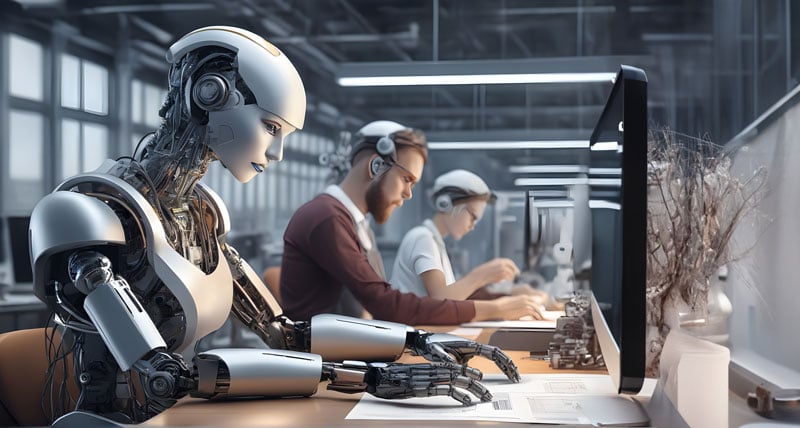AI's Impact on Employment: The Grand Rapids Layoffs
AI integration leads to 400 layoffs in Grand Rapids, highlighting the need for skills that complement automation. A global trend reshaping the workforce.

AI's Impact on Employment: The Grand Rapids Layoffs
A significant development has unfolded in Grand Rapids, Michigan, as a major company announced plans to lay off 400 employees, with 200 of these cuts affecting West Michigan. This move is attributed to the integration of Artificial Intelligence (AI) into the company's operations. The news reflects a broader trend where businesses are increasingly relying on AI to streamline processes and reduce costs, leading to job losses in various sectors.
Background on AI-Driven Layoffs
The use of AI in automating tasks and customer service roles has become more prevalent across industries. Companies like Salesforce have recently announced significant layoffs as they transition customer service roles to AI agents, emphasizing the continued need for human involvement despite these changes. Similarly, Recruit Holdings, the parent company of job search platforms Indeed and Glassdoor, laid off approximately 1,300 employees as it accelerates AI investments and consolidates operations.
The Grand Rapids Layoffs
While the specific company in Grand Rapids has not been named in the available reports, the decision to lay off 400 employees highlights the challenges faced by workers in industries where automation is increasingly prevalent. The layoffs are part of a larger trend where companies are leveraging AI to enhance efficiency and reduce operational costs. This shift towards automation underscores the need for employees to acquire skills that complement AI rather than compete with it.
Industry Impact and Context
The impact of AI on employment is multifaceted. On one hand, AI can enhance productivity and customer experience, allowing companies to focus on more strategic and creative tasks. On the other hand, it poses significant challenges for workers whose roles are being automated. This trend is not unique to Grand Rapids but is part of a broader global phenomenon where AI is transforming the workforce.
Key Statistics and Trends
- Layoffs in 2025: As of September 2025, over 3,555 companies have announced mass layoffs, reflecting a challenging economic environment.
- Industry-Wide Changes: Companies across various sectors, including technology, logistics, and food delivery, are adopting AI to improve efficiency and reduce costs.
- Skills for the Future: The increasing reliance on AI emphasizes the need for workers to develop skills that are complementary to automation, such as problem-solving, creativity, and critical thinking.
Context and Implications
The layoffs in Grand Rapids, while unfortunate for those affected, highlight the evolving nature of work in the digital age. As AI continues to play a larger role in business operations, it is crucial for both companies and governments to invest in retraining programs that prepare workers for roles that are less likely to be automated.
Potential Solutions
- Retraining and Upskilling: Companies and governments should prioritize programs that help workers develop skills that are complementary to AI, such as data analysis, digital literacy, and creative problem-solving.
- Support for Affected Workers: Offering support and resources to those who have lost their jobs due to automation, such as career counseling and financial assistance, can help mitigate the impact of these changes.
- Innovation and Job Creation: Encouraging innovation and entrepreneurship can lead to the creation of new jobs that did not previously exist, providing opportunities for workers who have been displaced by AI.
Additional Context on AI and Employment
The integration of AI into business operations is not limited to Grand Rapids or the United States. It is a global phenomenon that affects numerous sectors, from technology and manufacturing to services and logistics. Understanding the implications of AI on employment requires a comprehensive look at how different industries are adapting to these changes and how they are addressing the challenges faced by workers.
Conclusion
The announcement of layoffs in Grand Rapids due to AI integration serves as a reminder of the ongoing transformation of the workforce. As AI continues to shape the future of employment, it is crucial for businesses, governments, and individuals to work together to ensure that the benefits of technological progress are balanced with support for those affected by automation. By focusing on retraining, innovation, and job creation, society can navigate these changes effectively and create a more equitable and sustainable future for all workers.
Final Thoughts
As the world continues to grapple with the challenges and opportunities presented by AI, it is essential to approach these changes with a balanced perspective. By acknowledging both the efficiencies AI can bring and the challenges it poses for workers, we can work towards creating a future where technology enhances human capabilities rather than replacing them.



